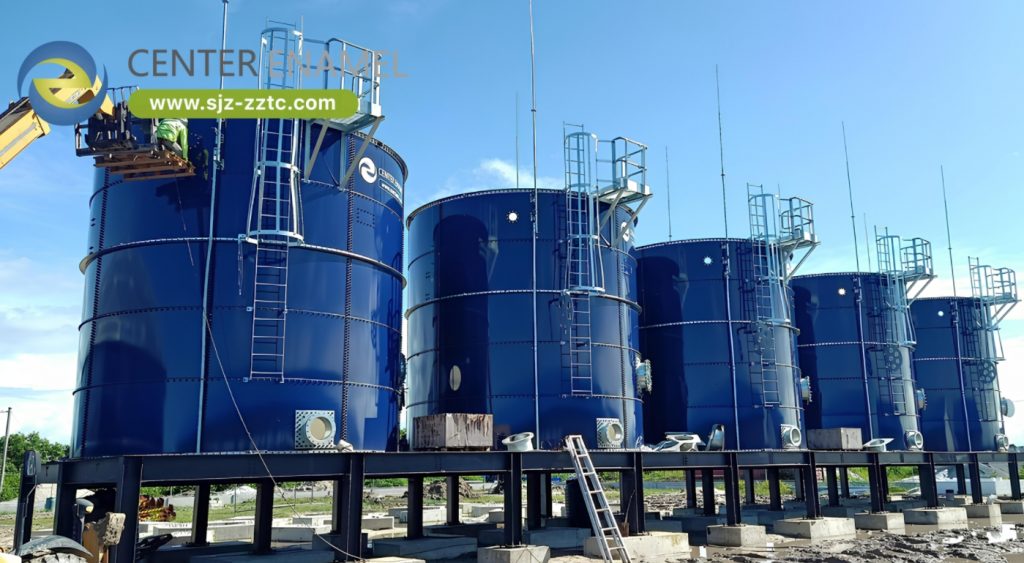UASB Anaerobic Reactors for Agricultural Runoff and Wastewater Treatment | Center Enamel

Effective management of agricultural runoff and wastewater is essential for safeguarding environmental quality and public health while optimizing resource utilization. Upflow Anaerobic Sludge Blanket (UASB) reactors have emerged as a proven technology for treating high-strength wastewater streams by leveraging anaerobic microbial processes to reduce organic load and generate renewable energy. Center Enamel offers advanced UASB anaerobic reactor solutions engineered to meet the rigorous demands of agricultural wastewater treatment.
The UASB reactor operates on the principle of anaerobic digestion, where organic matter in wastewater is converted into biogas by a consortium of microorganisms. In a UASB reactor, wastewater is introduced at the bottom of the reactor and flows upward through a dense sludge blanket. This sludge blanket, comprising granular microbial aggregates, facilitates the efficient breakdown of organic pollutants. The biogas produced, primarily methane and carbon dioxide, is captured at the top, while the treated effluent is discharged for further polishing or reuse.
Key Advantages of UASB Reactors for Agricultural Wastewater
1. High Treatment Efficiency
UASB reactors are capable of achieving significant reductions in Chemical Oxygen Demand (COD) and Biochemical Oxygen Demand (BOD). The granular sludge ensures close contact between the wastewater and active microorganisms, leading to efficient degradation of organic compounds even at high loading rates.
2. Renewable Energy Generation
One of the most compelling benefits of UASB technology is the production of biogas. The methane-rich biogas can be harnessed for on-site energy generation, reducing operational costs and contributing to a farm’s renewable energy portfolio.
3. Low Sludge Production
Compared to aerobic treatment systems, UASB reactors generate considerably less excess sludge. This reduction in sludge volume translates into lower disposal costs and decreased environmental impact, making the process more sustainable.
4. Operational Flexibility and Scalability
UASB reactors are adaptable to a wide range of wastewater characteristics and volumes. Their modular design allows for scalability, making them suitable for small agricultural operations as well as large-scale industrial farms.
5. Cost-Effective and Energy-Efficient
Operating under anaerobic conditions, UASB reactors require minimal aeration and lower energy input compared to conventional treatment methods. This results in reduced operational costs over the long term, while the biogas produced further offsets energy consumption.
Applications in Agricultural Runoff and Wastewater Treatment
Agricultural operations often contend with complex wastewater streams containing high concentrations of organic matter, nutrients, and suspended solids. UASB reactors can be employed in various applications within the agricultural sector:
- Runoff Treatment:
Agricultural runoff, often laden with fertilizers, pesticides, and organic debris, can be effectively treated using UASB technology. The reactor reduces pollutant levels before the water is discharged into natural water bodies, thereby protecting aquatic ecosystems. - Livestock Waste Management:
In livestock operations, UASB reactors can process manure and associated wastewater, mitigating odor issues and reducing methane emissions. The resultant biogas can be used for heating or electricity generation, while the digestate serves as an organic fertilizer. - Industrial Agricultural Wastewater:
Large-scale agricultural processing facilities generate wastewater with high organic loads. UASB reactors are well-suited for treating these effluents, ensuring compliance with environmental regulations and enabling water reuse for irrigation or cleaning purposes.
Environmental and Economic Benefits
Implementing UASB reactors for agricultural wastewater treatment offers considerable environmental advantages. By reducing organic pollutant loads and capturing methane emissions, these systems help lower greenhouse gas emissions and protect water quality. Economically, the dual benefits of effective wastewater treatment and renewable energy production contribute to a favorable return on investment. Reduced sludge management costs, lower energy requirements, and potential revenue from biogas utilization make UASB reactors a cost-effective solution for agricultural operators.
With decades of expertise in advanced storage and treatment technologies, Center Enamel is committed to delivering high-quality UASB reactors that meet the stringent demands of modern agricultural operations. Our systems are designed for reliability, scalability, and environmental compliance. We provide comprehensive support—from system design and customization to installation and ongoing maintenance—ensuring that our solutions integrate seamlessly into your wastewater management strategy.
For further information on how Center Enamel’s UASB reactor solutions can enhance your wastewater treatment processes and contribute to a more sustainable agricultural operation, please contact us today.
